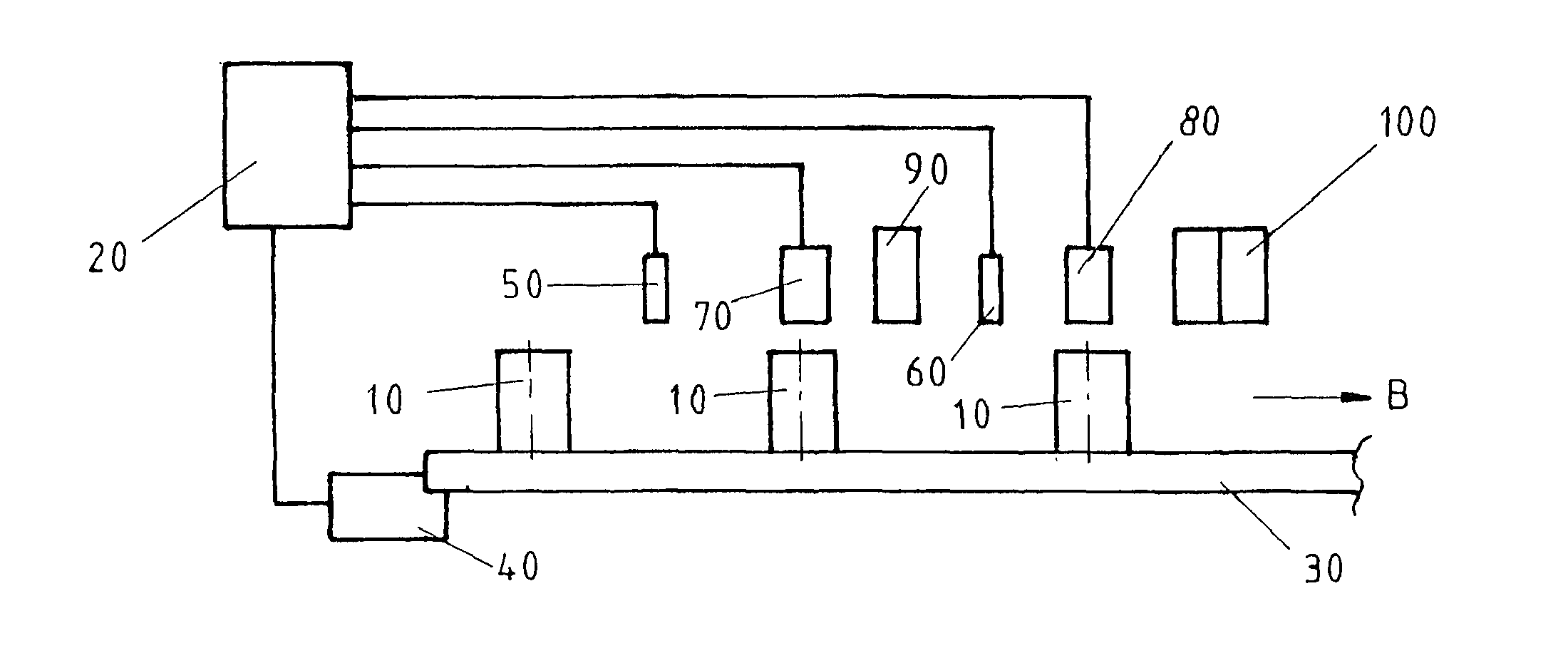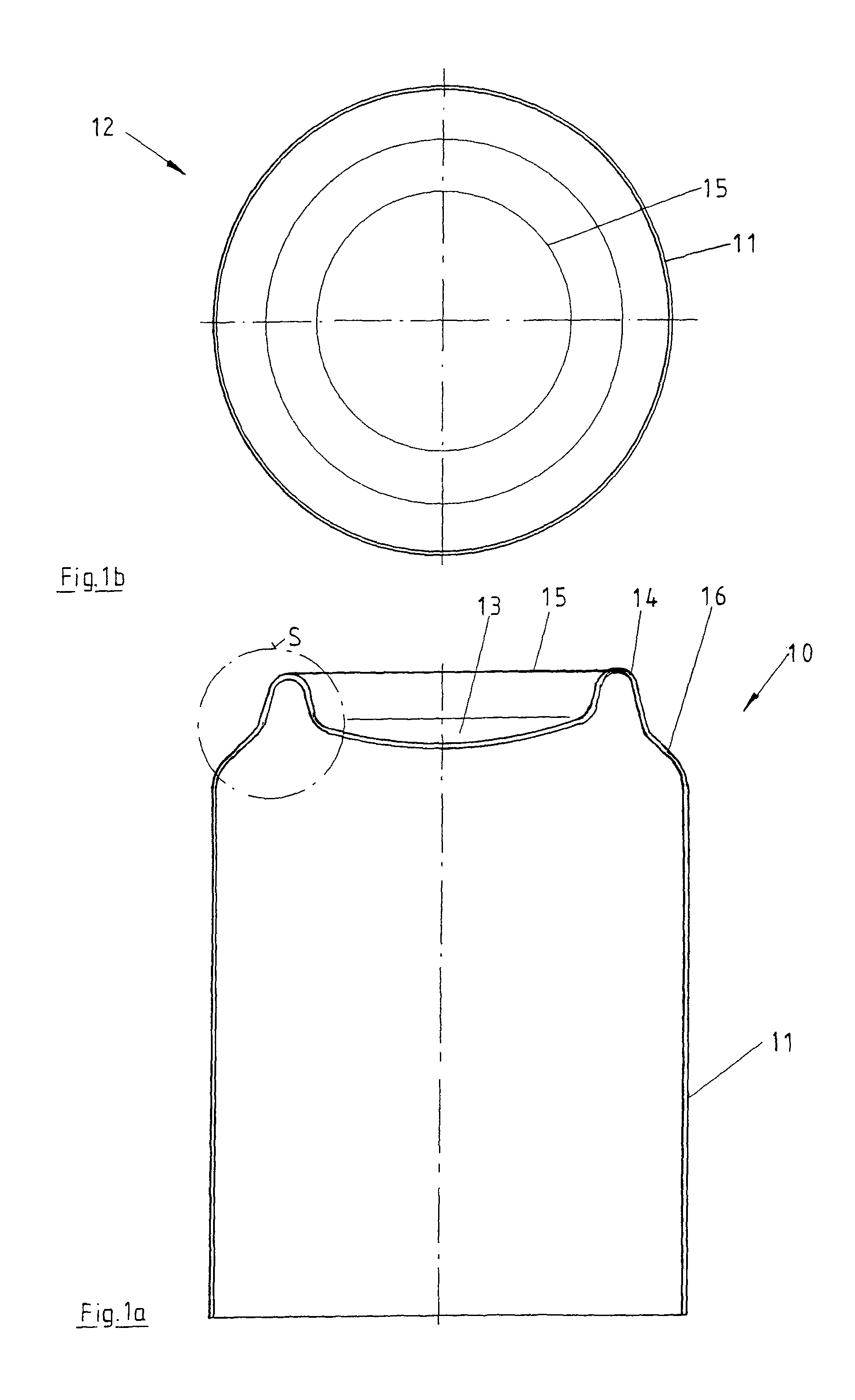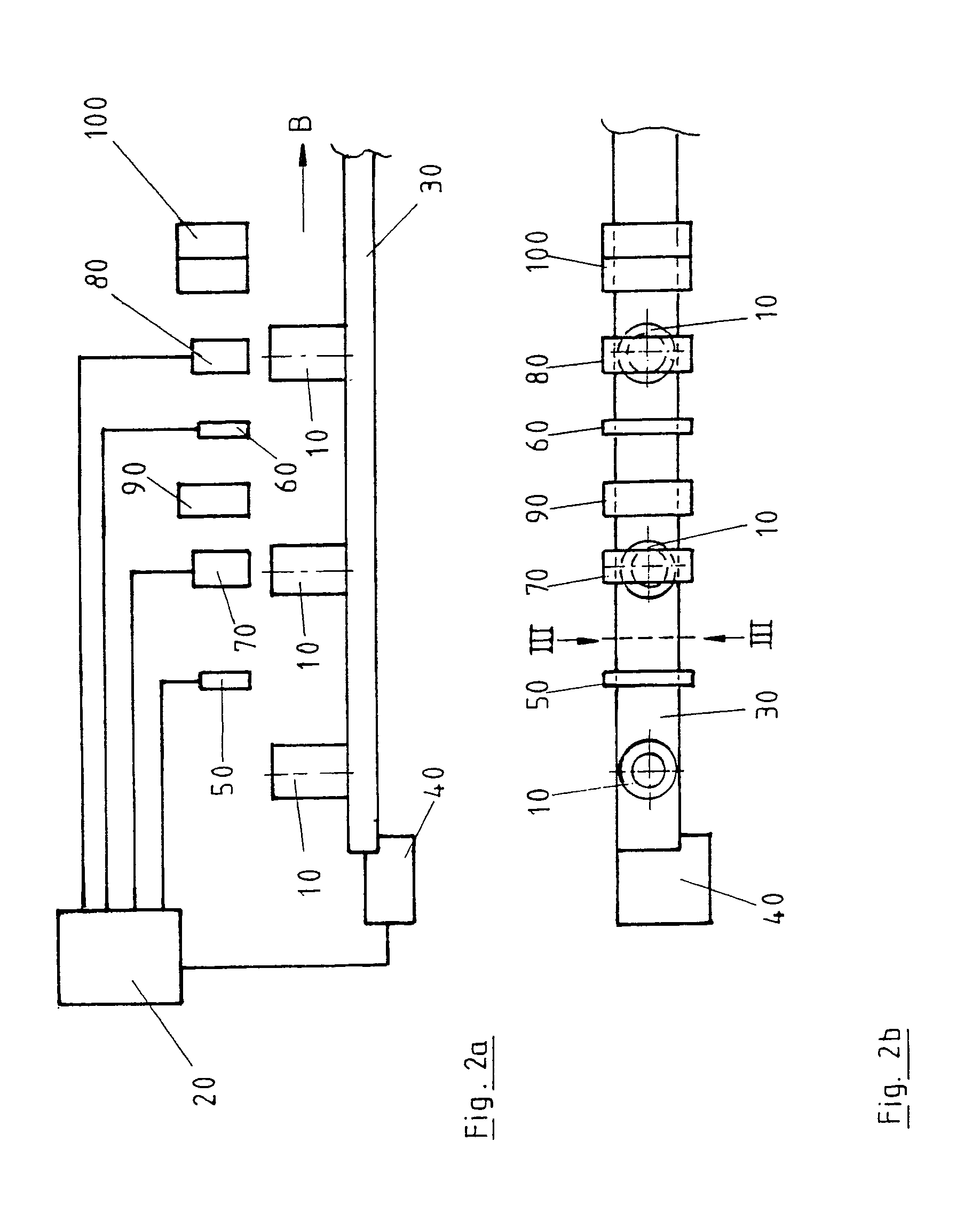Method and device for decorating an uneven surface of a dimensionally stable object
a dimensionally stable object and uneven surface technology, applied in the direction of typewriters, power drive mechanisms, printing, etc., can solve the problems of increased lacquer consumption, difficult lacquer or printing on that region, and inability to precisely distribute the lacquer with such a method, and achieve the effect of stable in respect of shap
- Summary
- Abstract
- Description
- Claims
- Application Information
AI Technical Summary
Benefits of technology
Problems solved by technology
Method used
Image
Examples
Embodiment Construction
[0037]The invention is described hereinafter with reference to lacquering the bottom of a beverage can. Such a beverage can is generally of a two-part design configuration and comprises in a one-piece structure a can body portion which is produced by way of a drawing-stretching shaping operation and which after filling of the can is closed with a lid. Hereinafter that lid can be disregarded as the invention is described with reference to lacquering of the can bottom.
[0038]FIG. 1a shows a sectional view of the can body portion in an upside-down position. FIG. 1b shows a plan view of the can bottom. The can body portion 10 is composed of a peripheral surface portion 11 and the actual bottom 12, reference 16 denoting a transitional region. Centrally relative to the axis the bottom has a domed portion 13 which radially outwardly goes into a support region 14 in the form of an annular ridge or outwardly curved portion. The extreme points, that is to say the lowest points in the base of t...
PUM
 Login to View More
Login to View More Abstract
Description
Claims
Application Information
 Login to View More
Login to View More - R&D
- Intellectual Property
- Life Sciences
- Materials
- Tech Scout
- Unparalleled Data Quality
- Higher Quality Content
- 60% Fewer Hallucinations
Browse by: Latest US Patents, China's latest patents, Technical Efficacy Thesaurus, Application Domain, Technology Topic, Popular Technical Reports.
© 2025 PatSnap. All rights reserved.Legal|Privacy policy|Modern Slavery Act Transparency Statement|Sitemap|About US| Contact US: help@patsnap.com



